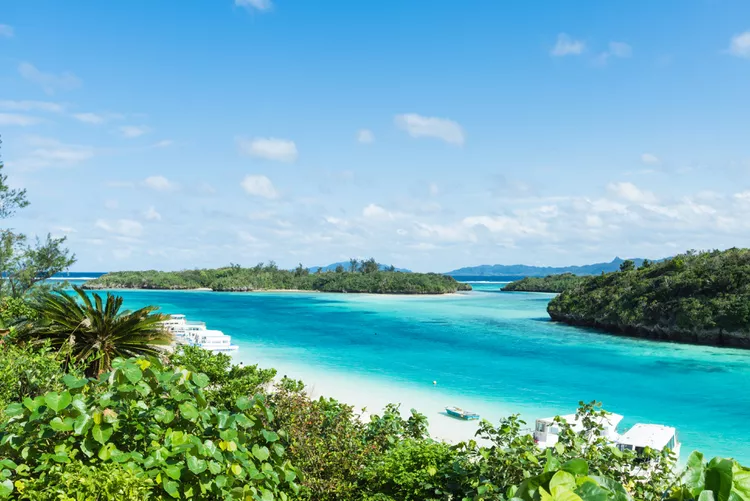Summary
About Okinawa
Okinawa is the tropical southernmost prefecture of Japan. The prefecture consists of about 160 islands, which are scattered over a 350-mile-long area. The main regions are Okinawa Honto (the main island of Okinawa), Kerama Shoto (the Kerama Islands), Kumejima (Kume Island), Miyako Shoto (the Miyako Islands) and Yaeyama Shoto (the Yaeyama Islands).
The Tropical Paradise
A population of about 1.4 million lives on 466 square miles of land scattered over these islands. The people live in near-perfect tropical conditions, where the average temperature is 73.4 degrees F (23.1 C), and a single rainy season lasts from early May to mid- or late June. By day, they swim in turquoise waters off broad, sandy beaches; by night, they dine on fresh pineapple under starry skies. These paradisiacal islands in the East China Sea between Taiwan and the Japanese mainland are a dream destination for many.
The Island Prefecture
On a map, the major Okinawa islands resemble a long disjointed tail off southern Japan, whipping toward the southwest. Naha, the capital, is centrally located in the southern part of Okinawa Honto, the largest island. Kume, known for its beautiful beaches, stands about 60 miles west of Okinawa Honto. If you look about 180 miles southwest of Okinawa Honto, you’ll find Miyako Island. The third largest island in the prefecture, Ishigaki, is located 250 miles southwest of Okinawa Honto; the small island of Taketomijima nestles close to Ishigaki. Continuing west from Ishigaki Island, there is Iriomote Island, the second largest in the Okinawa prefecture.
The Ryukyu Kingdom
Unlike other parts of Japan, the islands of Okinawa have a rich and unique history. Centuries ago, they were populated by the Ryukyu people. From the 15th century, the Ryukyu Kingdom flourished for over 400 years. Japan integrated the Ryukyu into its society in 1879, renaming the islands to Okinawa prefecture. During World War II, civilians were significantly involved in the famous Battle of Okinawa. Following WWII, Okinawa was under the control of the US Military until 1972. Today, major US military bases remain in Okinawa, while the local people preserve many traditions from the Ryukyu Kingdom, including aspects of language, arts, and music.
The Road to Naha
Flying is the fastest way to travel from major Japanese cities to Naha. The flight duration is approximately two and a half hours from Tokyo Haneda Airport and about two hours from Kansai Airport/Osaka International Airport (Itami). Alternatively, there are numerous flights available from various other Japanese cities to Naha. Yui Rail, a monorail service in Naha, connects Naha Airport to Shuri, a district of Naha that was the former royal capital of the Ryukyu Kingdom. Notable historical sites from the Ryukyu’s heyday, such as Shuri Castle—palace of the Ryukyu Kingdom from 1429 to 1879—remain as UNESCO-designated World Heritage Sites.





